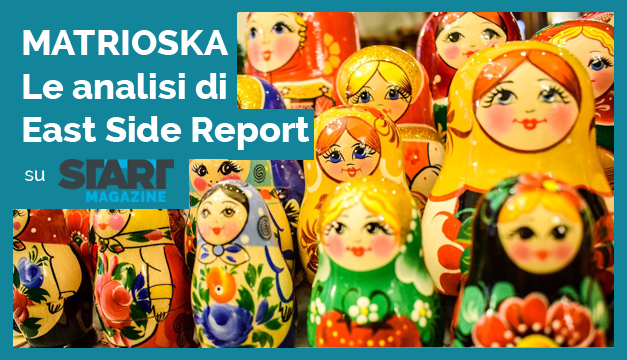How is East Germany doing?

Because the return of Covid has hit East Germany with more force. The article by Pierluigi Menniti of Eastsidereport.info
The economic prospects for the eastern regions of Germany are no different from those estimated for the whole country. Indeed, one of the factors that numbed the economic optimism of last summer affects the east rather than the west: the revival of the winter pandemic waves. In the former regions of the GDR, the return of covid has hit more strongly, due to the lower vaccination rate, in some Länder such as Saxony and Thuringia below 60% (basic cycle complete with two vaccinations). And also the administration of the third doses proceeds more slowly. Thanks to a greater presence of no-vax and supporters of conspiracy theories and a more widespread general skepticism (if not hostility) towards the authorities, political or health care.
The result is that together with other factors that have slowed the recovery in Germany and Europe, such as bottlenecks in supply chains and rising energy prices, the impact of the pandemic has been even more severe.
The data that the Ifo has announced in recent days, with specific attention to the so-called new Länder, confirm this, and are perfectly in line with those for the whole of Germany that the Munich institute had published at the beginning of the previous week. .
Economic growth in eastern Germany will stop at 2.6% this year, just 0.1% more than the national average estimated at 2.5%. The recovery should prove more robust in 2022, when Munich experts predict GDP of 3.2% for the Eastern Länder, half a point less than the GDP of the whole of Germany forecast at 3.7%.
"Restrictions on public life due to containment measures from the fourth pandemic wave inhibited contact-intensive service providers," explained Joachim Ragnitz, director of the Ifo's Dresden office and responsible for the periodic progress report. economy in the eastern regions. As in previous waves, operators linked to the service sector suffered the most. To this, continued Ragnitz, were added "the bottlenecks in deliveries, which have caused delays in industry and construction".
Relief, in the east as well as in the west, came from public aid, which largely supported the losses borne by the companies most affected by the anti-Covid measures.
In the forecasts for next year, Munich experts have assessed the impact that the pandemic, with the arrival of the omicron variant, will continue to have on the economy in the winter months. "At the beginning of 2022, the pandemic is expected to continue to have a dampening effect on the economy," resumed Ragnitz. And also this time it is very likely that the lower propensity to vaccinate among the population of the east makes the situation more difficult than the rest of the country. And perhaps also the subsequent spring recovery, which Bavarian analysts take for granted.
"As soon as the restrictions cease to exist, experience has shown that the economy will recover quickly from the crisis", is Ragnitz's opinion: after an initial stalemate, in the next year, all economic sectors should expand again significantly and thus contribute to strong economic growth. This is likely, however, to be slightly lower in East Germany than in Germany as a whole, as the East is less involved in international trade in goods than the West. A difference that is in fact found in the estimates, in that 0.5% less GDP growth that the new Länder will record compared to the old ones.
But experience also shows that the pandemic is as decisive as it is an imponderable factor in the elaboration of estimates, and that never as in the last two years have all forecasts had to deal with a more difficult reality than imagined. Also this time, faced with a more infectious variant that impacts a less vaccinated population, the recovery of the eastern regions could be even slower.
As a result, the labor market is also experiencing a much slower recovery than estimated in previous reports. On the contrary, 2021 should mark complete stagnation in the east and the recovery will take place in 2022, but to a lesser extent than in the western regions: the Ifo predicts that in the next year 48,000 people will find jobs again in the eastern Länder, equal to a + 0.5%.
This is a machine translation from Italian language of a post published on Start Magazine at the URL https://www.startmag.it/mondo/germania-est-congiuntura-2021-2022/ on Sun, 02 Jan 2022 07:55:24 +0000.
